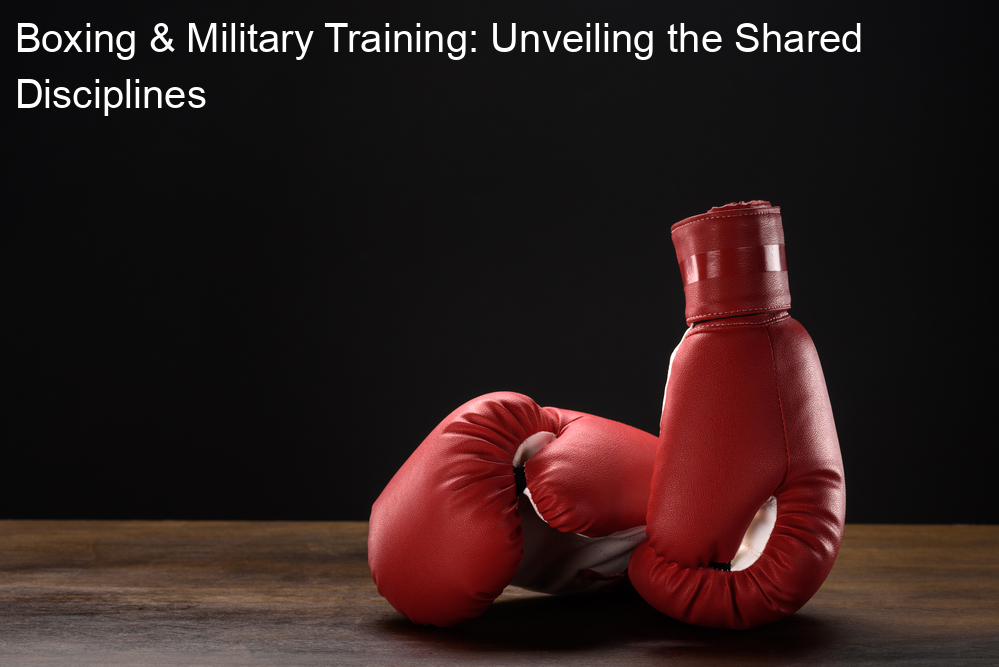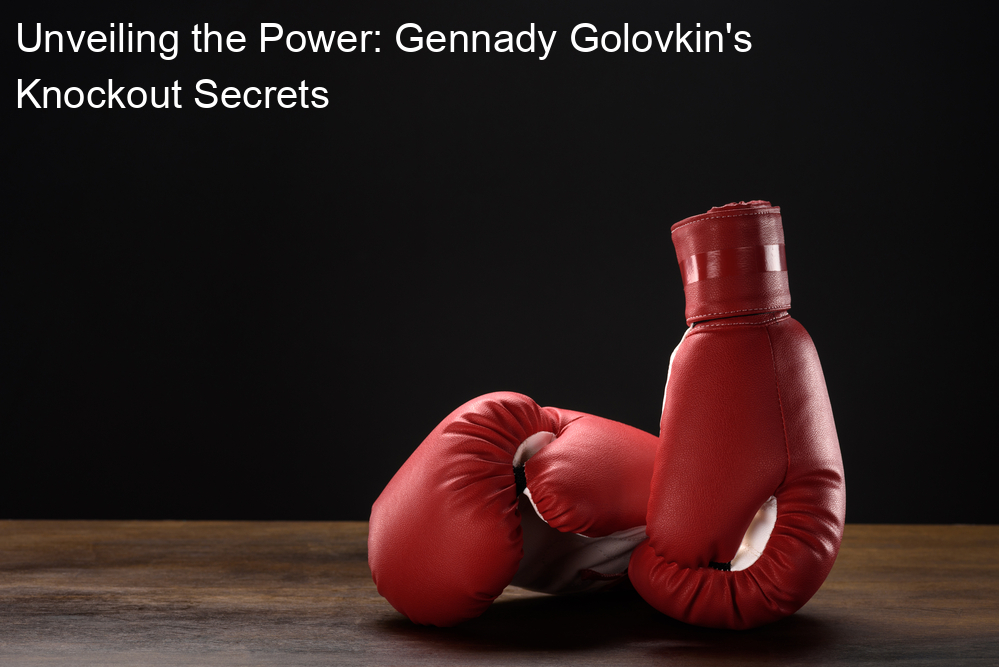
Introduction: Boxing and Military Training
When we think of strength, discipline, and determination, two fields often come to mind: boxing and military training. These two areas, while different in many ways, share some key elements that make them both challenging and rewarding.
- Overview of Boxing and Military Training
- Importance of Discipline in Both Fields
Boxing is a sport that requires a high level of physical fitness, mental toughness, and technical skill. It’s not just about throwing punches; it’s about strategy, timing, and endurance. On the other hand, military training is designed to prepare individuals for the physical and mental demands of military service. It involves rigorous physical training, tactical instruction, and discipline.
Discipline is a cornerstone in both boxing and military training. In boxing, discipline is needed to stick to a training regimen, to follow the rules of the sport, and to respect opponents. In the military, discipline is even more crucial. It’s about following orders, maintaining composure in stressful situations, and working as a team to accomplish a common goal. Without discipline, success in either field is nearly impossible.
Throughout this article, we will delve deeper into the similarities and differences between boxing and military training, the discipline techniques used in both fields, and the impact of boxing on military training. Stay tuned to learn more about these two fascinating fields.
Shared Disciplines in Boxing and Military
Boxing and military training share a surprising amount of disciplines. Both require a high level of physical fitness, mental toughness, and strategic thinking. Let’s delve into some of the specific techniques used in military training that are also applicable to boxing.
Military Training Techniques
Military training techniques are designed to build strength, endurance, and agility. These techniques also help to develop mental toughness and strategic thinking. Here are three key techniques that are also used in boxing:
- Technique 1: Interval Training
- Technique 2: Strength Training
- Technique 3: Mental Toughness Training
Interval training involves alternating between high-intensity and low-intensity exercises. This technique is used in the military to improve cardiovascular fitness and endurance. In boxing, interval training can help boxers to maintain their energy levels throughout a match.
Strength training is a key component of military training. It involves exercises like push-ups, pull-ups, and weight lifting to build muscle strength. Boxers also use strength training to increase their punching power and to improve their overall physical strength.
Mental toughness training is crucial in the military. It involves techniques like visualization, goal-setting, and stress management. These techniques help soldiers to stay focused and calm under pressure. Boxers also use mental toughness training to stay focused during a match and to handle the pressure of competition.
In conclusion, boxing and military training share many disciplines. Both require a high level of physical fitness, mental toughness, and strategic thinking. By understanding these shared techniques, we can gain a deeper appreciation for the skill and discipline required in both boxing and the military.
Boxing Training Techniques
Boxing is a sport that requires a great deal of discipline, strength, and strategy. Here are three key techniques that boxers use to train and prepare for their matches:
- Technique 1: Shadow Boxing
- Technique 2: Heavy Bag Training
- Technique 3: Speed Bag Training
Shadow boxing is a fundamental boxing technique where a boxer moves around, throwing punches at the air. It helps to improve footwork, boxing techniques, speed, and form. It’s like fighting an imaginary opponent, which helps to prepare for the real fight.
Heavy bag training is a key part of any boxer’s routine. This involves punching a heavy bag, which can weigh between 70 to 100 pounds. It helps to build power and endurance. It’s also a good way to practice combinations of punches.
Speed bag training is another important boxing technique. The speed bag is a small, air-filled bag that hangs at eye level. Boxers hit the speed bag in a rhythmic pattern, which helps to improve hand-eye coordination and speed.
These techniques are not only beneficial for boxers, but they can also be incorporated into military training. They help to build strength, speed, and endurance, all of which are crucial for both boxing and military training.
Connection Between Boxing and Military
Boxing and the military have a long-standing connection that dates back to ancient times. This connection is not only historical but also continues in the modern world. Let’s explore both the historical and modern connections between these two disciplines.
- Historical Connection
The historical connection between boxing and the military can be traced back to ancient Greece and Rome. Soldiers were often trained in boxing to improve their combat skills. Boxing was considered an essential part of military training, as it helped soldiers to develop strength, agility, and endurance. It also taught them how to defend themselves and attack their enemies effectively.
During World War I and II, boxing was a popular sport among soldiers. It was used as a form of recreation and a way to keep the soldiers fit and ready for battle. Famous boxers like Joe Louis and Sugar Ray Robinson served in the military and used their boxing skills to boost the morale of their fellow soldiers.
- Modern Connection
In the modern world, the connection between boxing and the military continues. Many military institutions around the world still include boxing in their training programs. Boxing helps soldiers to develop discipline, mental toughness, and physical fitness, which are all crucial for their roles in the military.
Boxing is also used as a form of therapy for veterans suffering from post-traumatic stress disorder (PTSD). The discipline and focus required in boxing can help them to manage their symptoms and improve their mental health.
In conclusion, the connection between boxing and the military is both historical and modern. It is a relationship that has stood the test of time and continues to be beneficial for both disciplines.
Boxing in Military Training
Boxing, a sport that requires strength, agility, and mental toughness, plays a significant role in military training. This section will delve into the role boxing plays in preparing soldiers for the rigors of military service.
Role of Boxing in Military Training
Boxing is not just about throwing punches. It’s a discipline that fosters physical fitness, mental toughness, and hand-to-hand combat skills. Let’s explore how these aspects of boxing contribute to military training.
- Physical Fitness
- Mental Toughness
- Hand-to-Hand Combat
Boxing is a total body workout that improves cardiovascular health, strength, and flexibility. It’s an effective way to get soldiers in top physical shape. The rigorous drills and exercises in boxing help soldiers build endurance, which is crucial for long marches and carrying heavy equipment.
Boxing is as much a mental game as it is physical. It teaches soldiers to stay focused and calm under pressure, a skill that is invaluable on the battlefield. Boxing also instills discipline and resilience, helping soldiers to push through tough situations and never give up.
Boxing techniques are useful in hand-to-hand combat situations. The footwork, speed, and precision learned in boxing can give soldiers an advantage in close combat. Moreover, boxing teaches soldiers how to take a hit and keep going, a valuable lesson for the battlefield.
In conclusion, boxing plays a vital role in military training. It not only prepares soldiers physically but also mentally for the challenges they will face. The discipline, resilience, and combat skills learned in boxing are directly applicable to military service.
Military Discipline in Boxing
Boxing, much like the military, requires a high level of discipline. This discipline is not only physical but also mental. It is the backbone of success in both fields. Let’s delve into the role of military discipline in boxing.
Role of Military Discipline in Boxing
Military discipline plays a crucial role in boxing. It is the driving force behind a boxer’s training regimen, focus, concentration, resilience, and perseverance. Let’s explore these aspects in more detail.
- Training Regimen
- Focus and Concentration
- Resilience and Perseverance
Just like soldiers, boxers follow a strict training regimen. This regimen includes rigorous physical exercises, technical drills, and strategic planning. The discipline instilled in the military helps boxers adhere to their training schedules, pushing their bodies to the limit to improve their strength, speed, and endurance.
In the military, focus and concentration are vital for survival. This same principle applies to boxing. Boxers need to stay focused and concentrate on their opponent’s moves to anticipate and counterattack effectively. Military discipline helps boxers maintain this level of focus and concentration throughout their matches.
Resilience and perseverance are key traits in both the military and boxing. In the military, soldiers face tough situations and must persevere to overcome them. Similarly, boxers face challenging opponents and must show resilience to withstand their attacks and persevere to win the match. Military discipline instills this resilience and perseverance in boxers, helping them overcome adversity and achieve their goals.
In conclusion, military discipline plays a pivotal role in boxing. It shapes the training regimen, focus, concentration, resilience, and perseverance of boxers, helping them excel in their sport. Just like soldiers, boxers must show discipline, dedication, and determination to succeed.
Boxing Discipline Techniques
Boxing, much like military training, requires a high level of discipline. This discipline is not only mental but also physical, and it is honed through various techniques. Let’s delve into some of these boxing discipline techniques that are also beneficial in military training.
Examples of Boxing Discipline Techniques
- Technique 1: The Jab
- Technique 2: The Cross
- Technique 3: The Hook
The jab is a basic boxing technique that requires discipline to master. It is a quick, straight punch thrown with the lead hand. The jab is not only used for offense but also for defense, as it can keep an opponent at a distance. This technique requires precision, speed, and control, which are all aspects of discipline.
The cross, also known as a straight, is a powerful punch thrown with the rear hand. It requires a boxer to maintain balance and coordination while delivering a forceful blow. This technique teaches discipline as it requires a boxer to stay focused and controlled, even when under pressure.
The hook is a punch thrown in a semi-circular motion, targeting the opponent’s side. This technique requires a high level of discipline to execute correctly as it involves complex body movements. The hook teaches a boxer to remain disciplined in their movements and to use their body efficiently.
These are just a few examples of the many discipline techniques in boxing. Each one requires a high level of physical and mental discipline to execute correctly. By practicing these techniques, boxers can develop the discipline necessary for both the ring and the battlefield.
Similarities Between Boxing and Military Training
Boxing and military training, though seemingly different, share a lot of commonalities. Both require discipline, strength, and strategic thinking. Let’s delve into some of the key similarities between these two fields.
- Similarity 1: Discipline and Rigor
- Similarity 2: Physical Fitness
- Similarity 3: Strategic Thinking
Both boxing and military training demand a high level of discipline. Participants must adhere to strict training schedules, follow specific diet plans, and maintain a focused mindset. This discipline is crucial in both fields as it helps individuals to remain consistent, improve their skills, and achieve their goals.
Physical fitness is a prerequisite in both boxing and military training. Both require individuals to be in top physical condition to perform their duties effectively. They involve rigorous workouts that target various muscle groups, enhancing strength, endurance, agility, and speed.
Strategic thinking is another common thread between boxing and military training. In boxing, fighters must strategize their moves to outwit their opponents. Similarly, in the military, strategic planning is essential in executing missions successfully. Both fields require individuals to think on their feet, make quick decisions, and adapt to changing situations.
In conclusion, while boxing and military training may seem worlds apart, they share significant similarities. Both fields require discipline, physical fitness, and strategic thinking. Understanding these similarities can help individuals excel in either field and appreciate the skills and values they can learn from each other.
Impact of Boxing on Military Training
Boxing has had a significant influence on military training. The discipline, strength, and strategic thinking required in boxing are all skills that are highly valued in the military. Let’s delve into some case studies to understand this impact better.
Case Studies
- Case Study 1: The U.S. Military Academy at West Point
- Case Study 2: The British Army
At the U.S. Military Academy at West Point, boxing is a mandatory part of the curriculum. The academy believes that boxing teaches cadets about courage, tenacity, and the will to keep going even when things get tough. These are all qualities that are essential on the battlefield.
Statistics show that the boxing program at West Point has been successful. Cadets who have gone through the boxing program have shown improved physical fitness, increased mental toughness, and enhanced leadership skills.
The British Army has a long history of incorporating boxing into its training regimen. Boxing is used to build physical strength, improve hand-eye coordination, and develop strategic thinking skills.
A study conducted by the British Army found that soldiers who participated in boxing training were better able to handle high-stress situations. They were also more likely to make quick, strategic decisions under pressure, a skill that is invaluable on the battlefield.
In conclusion, the impact of boxing on military training is clear. It helps to build physical strength, improve mental toughness, and develop strategic thinking skills. These are all qualities that are essential for success on the battlefield.
Conclusion: The Interplay of Boxing and Military Training
As we conclude, it’s clear that the disciplines of boxing and military training are not just similar, but deeply interconnected. The shared focus on discipline, physical fitness, and strategic thinking makes boxing an effective training tool for the military, and vice versa.
- Key Takeaways
- Both boxing and military training require high levels of physical fitness and discipline.
- Boxing techniques are often incorporated into military training to enhance combat readiness.
- Military discipline principles can be applied to boxing to improve performance and strategic thinking.
- Future Implications
Throughout this article, we’ve learned that:
Looking ahead, it’s likely that the interplay between boxing and military training will continue to evolve. As new training methods and technologies emerge, both fields can learn and benefit from each other. For instance, virtual reality could be used to simulate boxing matches or combat scenarios, providing a safe and efficient training environment.
In the end, the relationship between boxing and military training is a testament to the power of discipline, strategy, and physical fitness. Whether you’re a boxer stepping into the ring or a soldier on the battlefield, the same principles apply. As the saying goes, “The more you sweat in training, the less you bleed in battle.”






